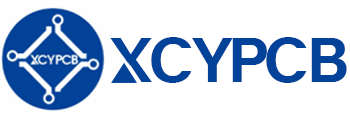26
2025
-
06
The Marvels ofMultilayer Boards: A Deep Dive into Industry Solutions
Author:
Understanding theMultilayer Board
Hey there, tech enthusiasts! Have you ever wondered how your favorite gadgets tick? Well, hold onto your hats because we’re diving into the world of multilayer boards—the unsung heroes of modern electronics!
What is aMultilayer Board?
So, what exactly is a multilayer board? In simple terms, it’s a printed circuit board (PCB) that consists of multiple layers of conductive pathways. These layers are stacked and bonded together, allowing for complex circuit designs that would be impossible with single or double-layer boards. Talk about a game changer!
Why UseMultilayer Boards?
Alright, let’s cut to the chase. Why should anyone bother with multilayer boards? Well, they offer several advantages:
- Space Efficiency: With all those layers, you can pack a lot of circuitry into a small footprint, which is perfect for today’s compact devices.
- Enhanced Performance: Multilayer boards can reduce signal interference and improve overall performance, making them ideal for high-speed applications.
- Design Flexibility: Designers can create intricate layouts, which opens up a world of possibilities for innovative products.
The Manufacturing Process
Now, let’s get our hands dirty and peek behind the curtain at how these beauties are made. The manufacturing process of a multilayer board generally involves:
- Layer Preparation: Each layer is prepared separately, including etching the circuits and applying a dielectric material.
- Layer Stacking: Once all layers are ready, they’re stacked and aligned with great precision.
- Bonding: The layers are then bonded together using heat and pressure, ensuring a solid and reliable structure.
- Drilling and Plating: Vias are drilled to connect the layers, followed by plating to create electrical connections.
Can you believe the craftsmanship involved? It’s like a delicate dance of technology!
Applications in Various Industries
Now that you know what a multilayer board is and how it’s made, let’s explore where they shine:
- Consumer Electronics: From smartphones to gaming consoles, multilayer boards are at the heart of our favorite devices.
- Automotive: Modern vehicles are more like computers on wheels, and multilayer boards play a crucial role in their electronic systems.
- Medical Devices: In the healthcare field, precision is key. Multilayer boards help create reliable medical equipment that can save lives.
- Aerospace: When it comes to flight, there’s no room for error. Multilayer boards are used in avionics for their reliability and performance.
Challenges and Considerations
Of course, it’s not all sunshine and rainbows. There are challenges associated with multilayer boards too. For instance, the complexity of design can lead to increased costs. Additionally, the manufacturing process requires precision and quality control, which can be a bit of a headache. But hey, every cloud has a silver lining, right?
The Future ofMultilayer Boards
As technology continues to advance, the demand for multilayer boards is only going to grow. With the rise of IoT devices, 5G technology, and AI applications, we can expect to see even more innovative uses for these boards. Exciting times ahead, folks!
Conclusion
To wrap it up, multilayer boards are a crucial component in the high-tech landscape. They not only enhance the functionality of electronic devices but also pave the way for future innovations. Whether you’re a manufacturer, designer, or just a curious tech lover, understanding these boards is essential for keeping up with the fast-paced world of technology. So, the next time you pick up your smartphone, give a little nod to the multilayer board inside—because it’s doing a lot more than meets the eye!
Contact Information
Address: 318 Nanshan Road, Jianghai District, Jiangmen City, Guangdong Province
Welcome to contact me

Mr. Fang

Miss Li
Message
